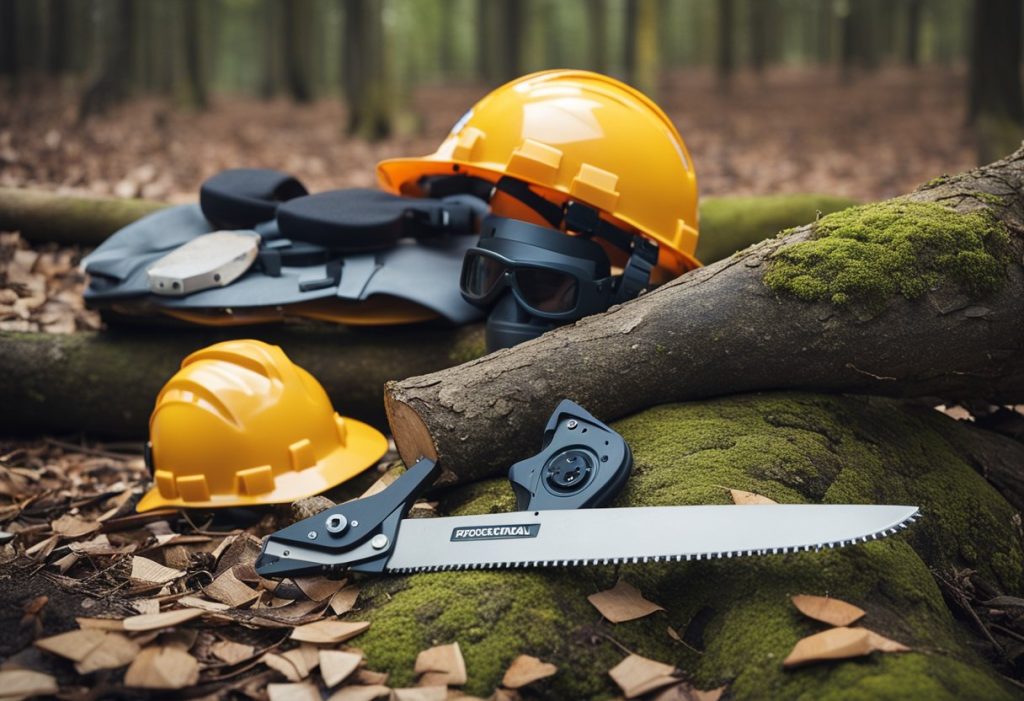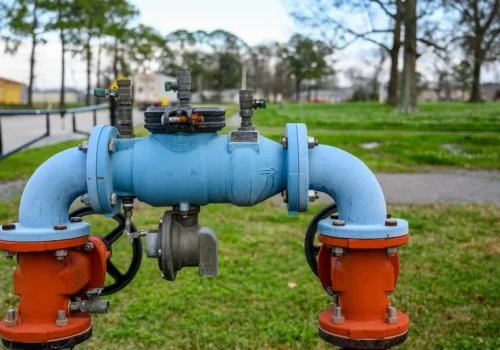Tree Felling Equipment: A Comprehensive Guide

Felling a tree requires meticulous planning, precise execution, and the use of appropriate equipment. Whether you’re an arborist or a homeowner, ensuring the safety and efficiency of the endeavor hinges upon employing the right tools and techniques. In this guide, we will explore the indispensable equipment required for tree felling, from selecting the appropriate gear to implementing the felling process.
Know more about tree surgeon newcastle
Essential Tree Felling Equipment
The cornerstone of any tree-felling operation is the utilization of proper equipment. Here’s a breakdown of the indispensable tools:
1. Chainsaw: Central to the process, a chainsaw is the primary tool for felling trees. It is imperative to select a chainsaw commensurate with the size of the tree being felled. Chainsaws with a minimum power of 50cc are recommended for medium to large trees. Furthermore, regular maintenance and sharpening of the chainsaw’s blade are imperative for safe and efficient cutting.
2. Axe and Wedges: An axe and wedges play a pivotal role in facilitating the felling cut and controlling the direction of the tree’s fall. The axe is employed to make a horizontal cut, known as the felling cut, while wedges are instrumental in guiding the tree’s descent. Felling wedges prevent the tree from inadvertently pinching the chainsaw, whereas a breaking bar or impact bar aids in lifting the tree and prevents it from falling onto the chainsaw.
3. Personal Protective Equipment (PPE): Safety considerations are paramount during tree-felling operations. Personal protective equipment encompasses gloves, a helmet, boots, goggles, earmuffs, and chaps. Gloves shield hands from cuts and abrasions, while a helmet protects falling branches and debris. Boots offer ankle support and safeguard against falling branches, while goggles protect the eyes from airborne debris. Earmuffs mitigate the noise generated by the chainsaw, and chaps offer protection to the legs from the chainsaw’s blade.
Planning and Execution
1. Assessing the Tree: Evaluate its dimensions, lean, and health to determine the best approach. Identify obstacles such as neighboring trees or structures.
2. Determining the Felling Direction: Consider wind direction, slope, and hazards to decide on the safest direction for the tree’s fall.
3. Executing the Felling: Implement the plan using a combination of techniques and specialized equipment, focusing on safety and risk assessment.
Safety Precautions
Upholding safety protocols is paramount throughout the tree-felling process. Adhere to the following precautions:
1. Wear personal protective equipment at all times and maintain a safe distance from others.
2. Utilize high-visibility clothing or vests for enhanced visibility.
ConclusiTree Felling Equipment: A Comprehensive Guide
Felling a tree requires meticulous planning, precise execution, and the use of appropriate equipment. Whether you’re an arborist or a homeowner, ensuring the safety and efficiency of the endeavor hinges upon employing the right tools and techniques. In this guide, we will explore the indispensable equipment required for tree felling, from selecting the appropriate gear to implementing the felling process.
Essential Tree Felling Equipment
The cornerstone of any tree-felling operation is the utilization of proper equipment. Here’s a breakdown of the indispensable tools:
1. Chainsaw: Central to the process, a chainsaw is the primary tool for felling trees. It is imperative to select a chainsaw commensurate with the size of the tree being felled. Chainsaws with a minimum power of 50cc are recommended for medium to large trees. Furthermore, regular maintenance and sharpening of the chainsaw’s blade are imperative for safe and efficient cutting.
2. Axe and Wedges: An axe and wedges play a pivotal role in facilitating the felling cut and controlling the direction of the tree’s fall. The axe is employed to make a horizontal cut, known as the felling cut, while wedges are instrumental in guiding the tree’s descent. Felling wedges prevent the tree from inadvertently pinching the chainsaw, whereas a breaking bar or impact bar aids in lifting the tree and prevents it from falling onto the chainsaw.
3. Personal Protective Equipment (PPE): Safety considerations are paramount during tree-felling operations. Personal protective equipment encompasses gloves, a helmet, boots, goggles, earmuffs, and chaps. Gloves shield hands from cuts and abrasions, while a helmet protects falling branches and debris. Boots offer ankle support and safeguard against falling branches, while goggles protect the eyes from airborne debris. Earmuffs mitigate the noise generated by the chainsaw, and chaps offer protection to the legs from the chainsaw’s blade.
Planning and Execution
1. Assessing the Tree: Evaluate its dimensions, lean, and health to determine the best approach. Identify obstacles such as neighboring trees or structures.
2. Determining the Felling Direction: Consider wind direction, slope, and hazards to decide on the safest direction for the tree’s fall.
3. Executing the Felling: Implement the plan using a combination of techniques and specialized equipment, focusing on safety and risk assessment.
Safety Precautions
Upholding safety protocols is paramount throughout the tree-felling process. Adhere to the following precautions:
1. Wear personal protective equipment at all times and maintain a safe distance from others.
2. Utilize high-visibility clothing or vests for enhanced visibility.
Conclusion
The successful felling of a tree necessitates meticulous planning, proficient execution, and adherence to safety protocols. By adhering to the guidelines elucidated in this comprehensive guide, you can ensure that your tree-felling endeavors are carried out safely, efficiently, and with minimal disruption to the surrounding environment. Whether you’re a seasoned professional or a homeowner, equipped with the requisite tools and expertise, you can undertake tree-felling projects with confidence and proficiency.
The successful felling of a tree necessitates meticulous planning, proficient execution, and adherence to safety protocols. By adhering to the guidelines elucidated in this comprehensive guide, you can ensure that your tree-felling endeavors are carried out safely, efficiently, and with minimal disruption to the surrounding environment. Whether you’re a seasoned professional or a homeowner, equipped with the requisite tools and expertise, you can undertake tree-felling projects with confidence and proficiency.



